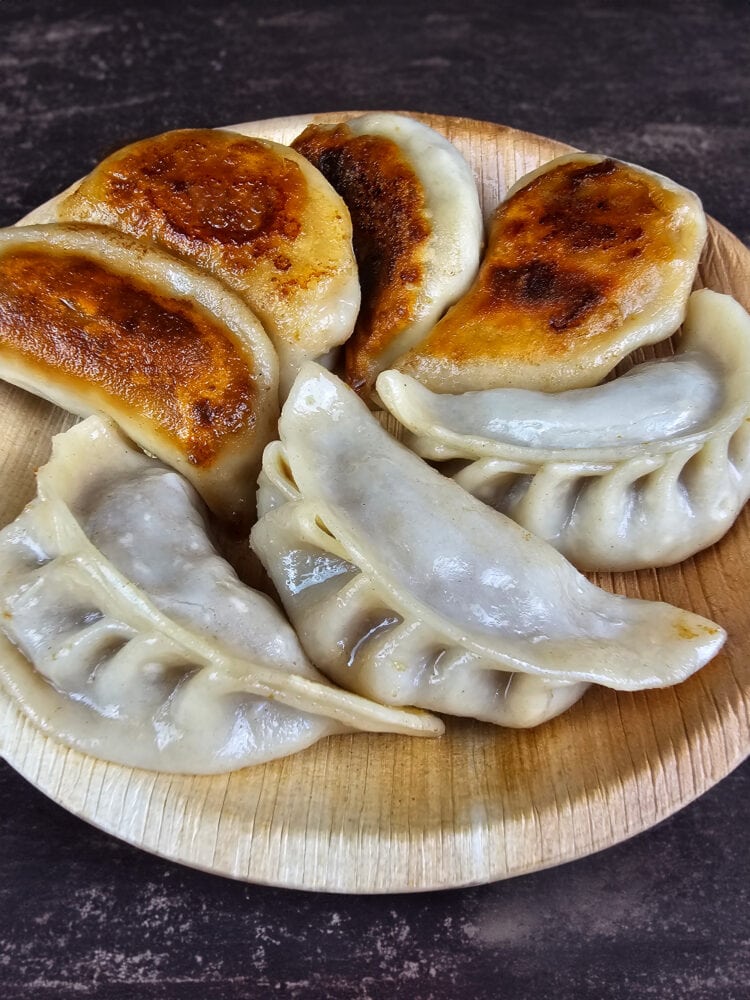Delicious traditional Japanese dumplings called Gyoza with a super juicy beef filling
Ah, Gyoza! Who can resist these little Japanese dumplings that have conquered the world? Even if you’re a novice in Asian cuisine, there’s a good chance you’ve already tasted or at least heard of these delights.
Origins of Gyoza
Gyoza weren’t born in Japan, but in China, where they are known as jiaozi. These dumplings crossed the sea to adapt to Japanese culinary preferences. While Chinese jiaozi are often fattier and richer in meat (which I don’t mind at all), gyoza have been modified to better suit the Japanese palate.
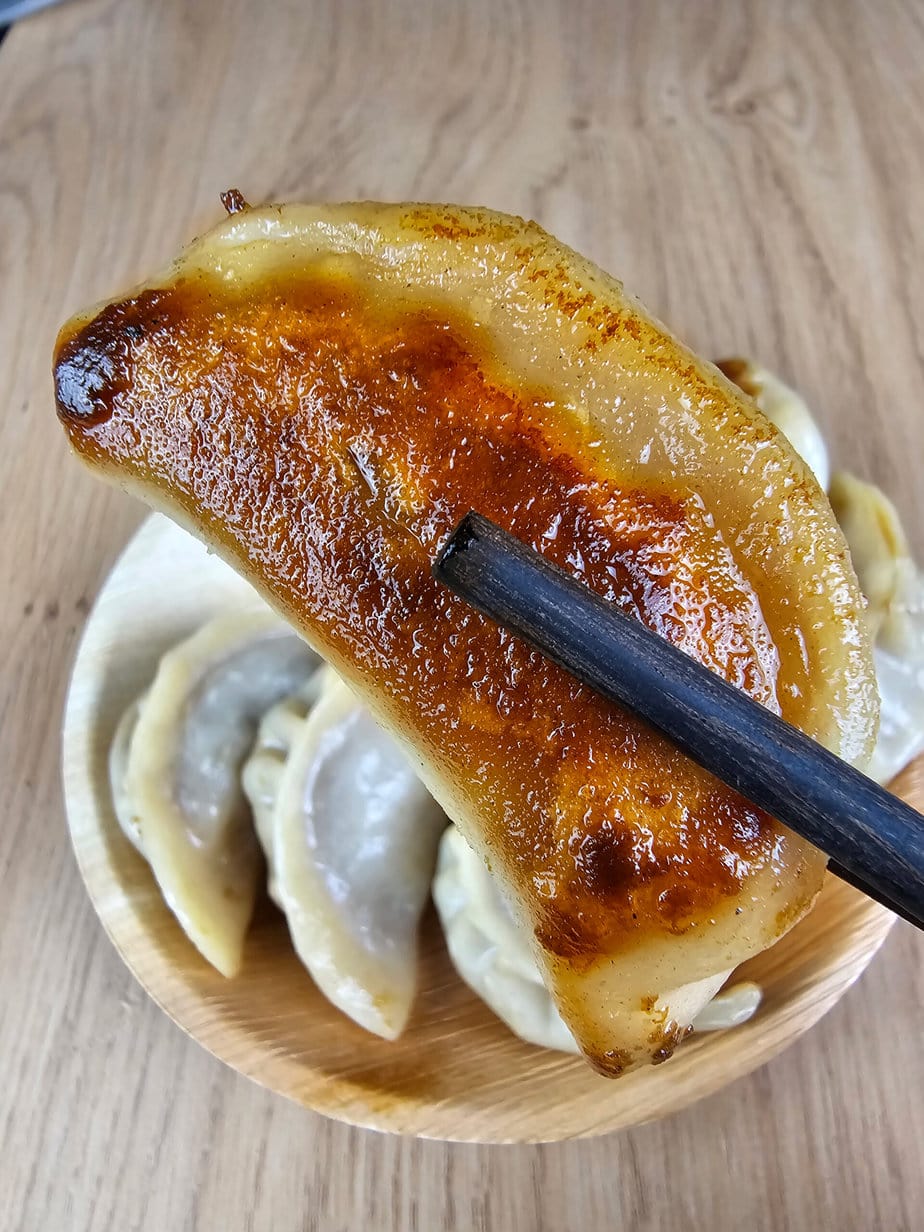
The Japanese Adaptation: A Balance between Meat and Vegetables
Unlike their Chinese cousins, which are generally fattier, Japanese gyoza have a different balance between meat and vegetables.
This is not to say that jiaozi are less delicious, but simply that gyoza are a slightly lighter version adapted to Japanese tastes. But don’t be fooled, they are still incredibly flavorful!
Gyoza have not only adapted to Japanese taste but have also diversified into a multitude of variations. You can find chicken gyoza, the original version of pork gyoza, pork mixed with shrimp, or even entirely vegetarian versions.
However, today we’re going to focus on the extremely delicious beef version.
How to cook Beef Gyoza?
These delicious Japanese dumplings can be cooked in different ways. The traditional method results in gyoza with an ultra-crispy bottom and a soft top. But why pan-fry them twice? Is it really necessary? Let’s explore the different methods for cooking these little wonders.
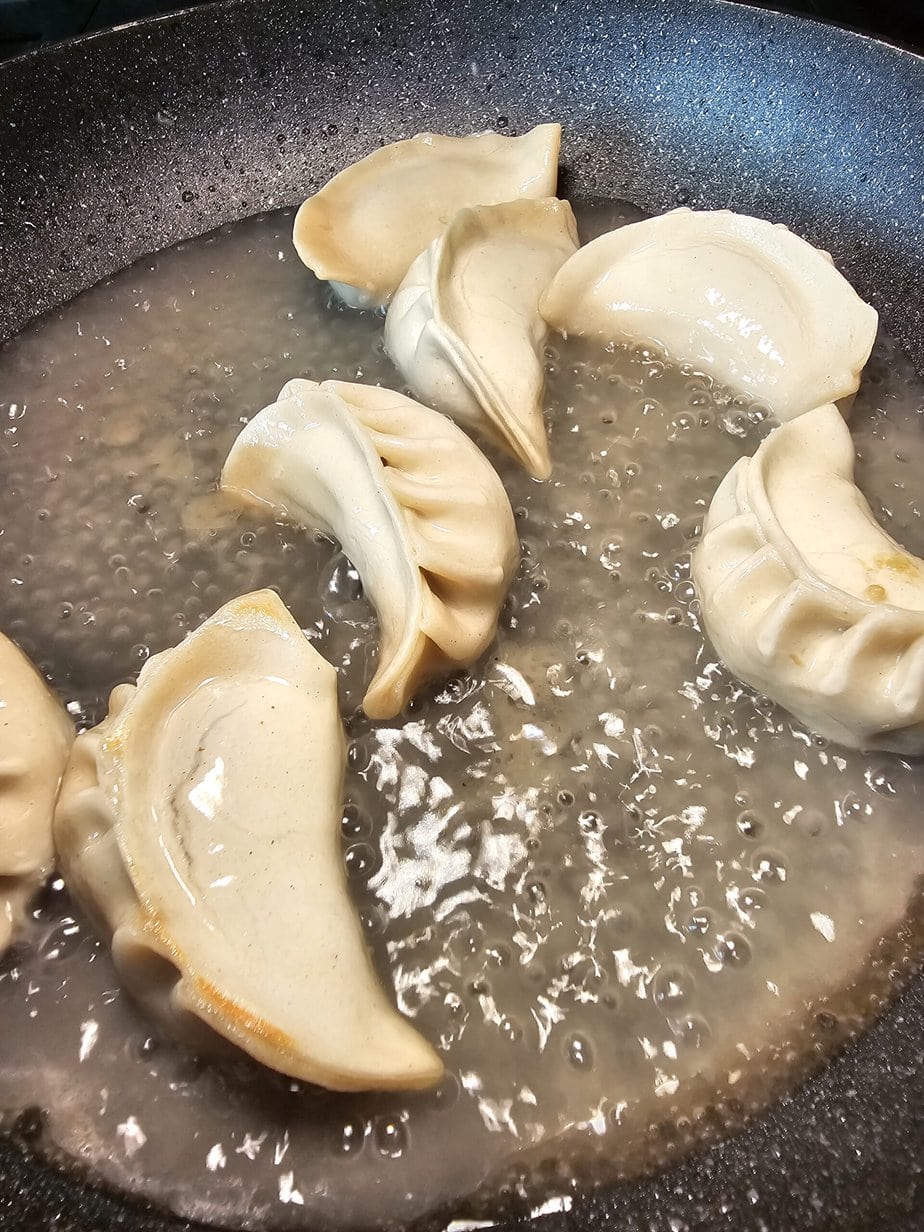
Yaki Gyoza (Pan-Fried Gyoza)
In this method, the gyoza are first sautéed in a bit of oil until crispy, then steamed under a lid. This double cooking is essential for achieving a really crispy bottom. The first “frying” allows the dough to form micro-bubbles that increase the crispy surface.
Sui Gyoza (Steamed or Boiled Gyoza)
In this variant, the gyoza are either steamed or boiled. You can then fry them to make the bottom crispy.
Although this method gives reasonably crispy results, it doesn’t create the micro-bubbles that make yaki gyoza exceptionally crispy. Sui gyoza can also be incorporated into a delicious chintan broth, similar to a wonton soup in the end.
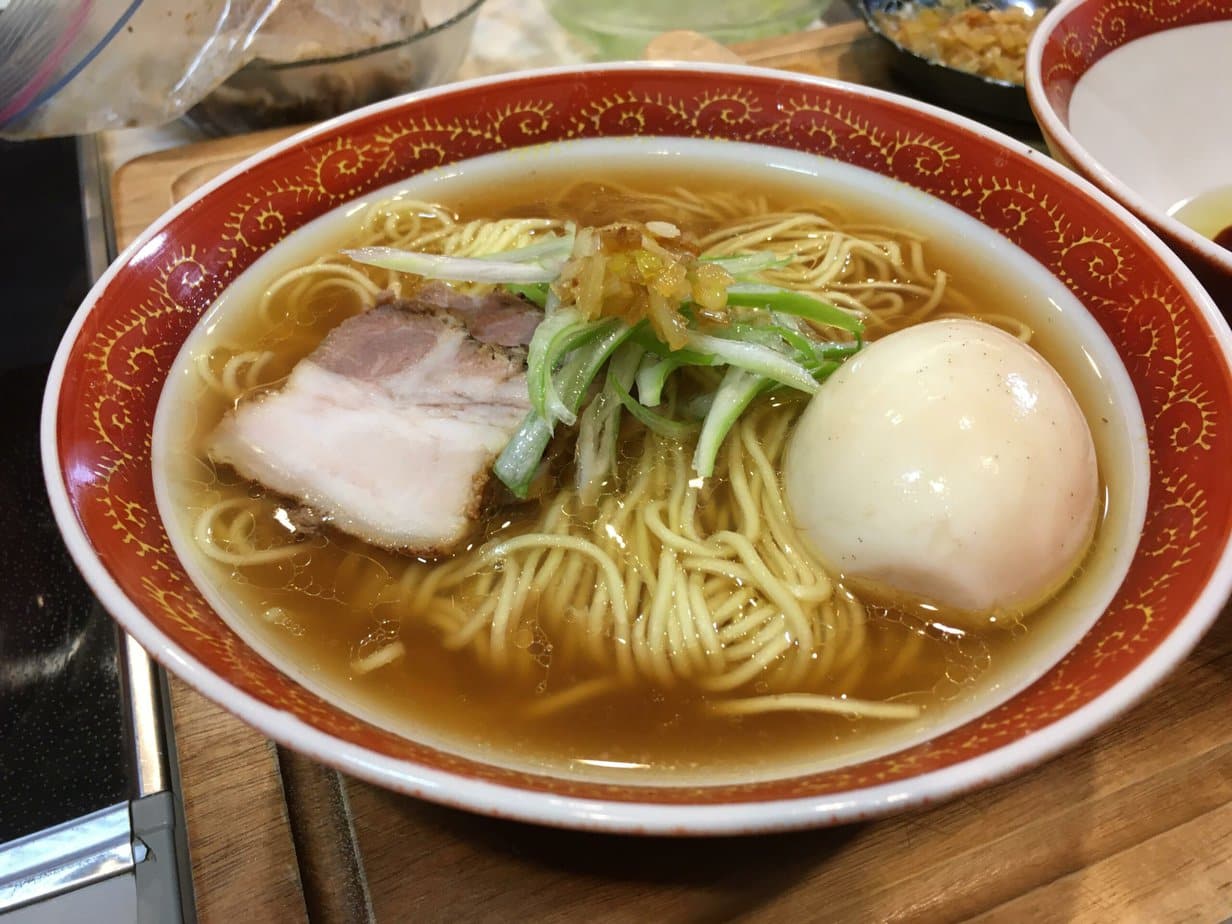
Fried Gyoza
Here, the gyoza are entirely fried, without a steaming or boiling step. This method gives fully crispy gyoza but without the texture contrast found in yaki gyoza.
Is it worth making your own gyoza dough?
Yes and no. The advantage of homemade gyoza dough compared to frozen store-bought dough is the slightly better texture, size customization, and price. If you’re making hundreds of gyoza, the unit cost will drastically decrease if you make your own dough.
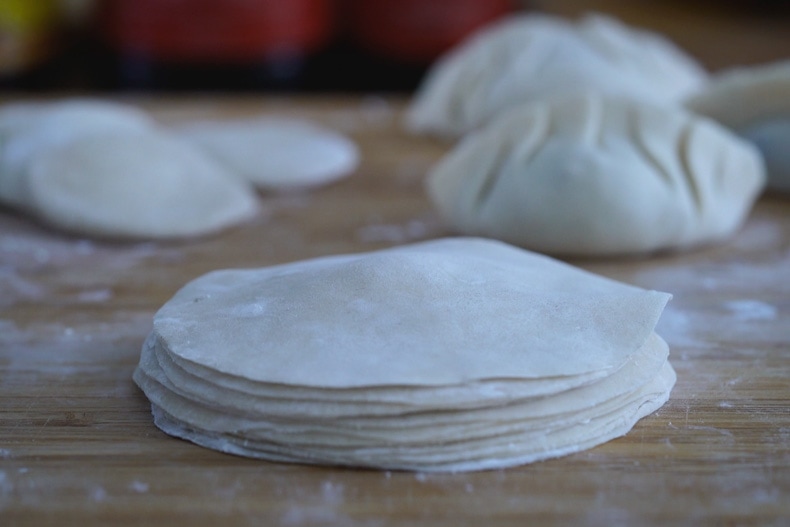
On the contrary, by choosing frozen Gyoza wrappers, you’ll save a lot of time without necessarily compromising on taste. Using them is simple, just put them in the fridge 24 hours before use to thaw them gently
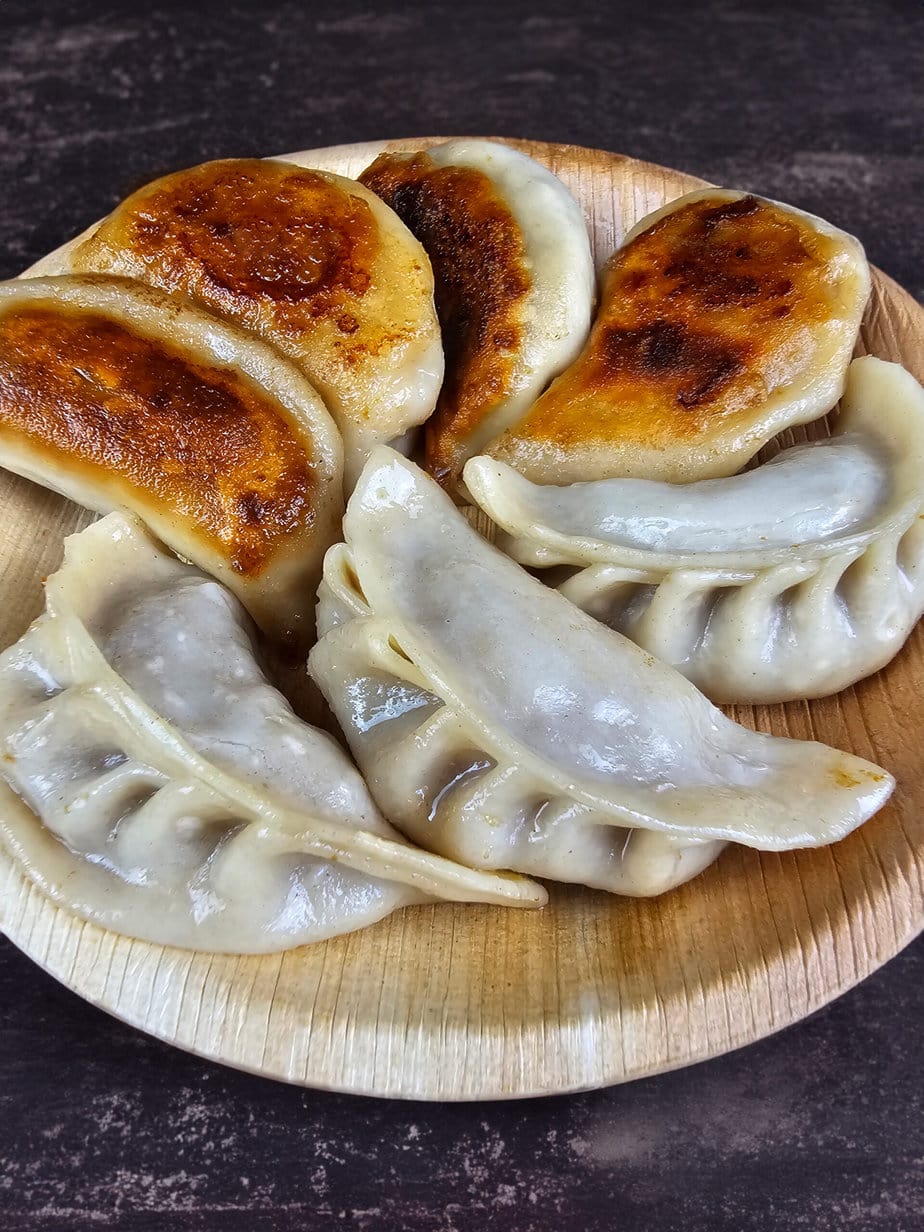
Beef Gyoza
Equipment
- steamer basket
Ingredients
- 50 wrappers for gyoza
Farce
- 250 g of finely minced Chinese cabbage
- 5 g salt for the cabbage
- 7 g salt for the filling
- 500 g of ground beef use at least 15% fat content
- 2 g white pepper
- 15 g garlic sliced
- 5 g of fresh ginger sliced
- 60 g young onions very finely minced
- 5 g of sugar
- 15 g of cilantro stems very finely minced
- 1 tablespoon sesame oil
- 1 tablespoon neutral oil if you have animal fat such as lard or duck fat, it’s ideal
Dipping sauce
- 120 ml rice vinegar
- 60 ml light soy sauce
- 30 ml of Japanese chili oil optional
Instructions
- Mix the cabbage and the salt for it in a bowl250 g of finely minced Chinese cabbage, 5 g salt
- Let it rest at room temperature for 15 minutes in a fine-mesh strainer
- Press the cabbage in a clean cloth to remove excess moisture. You really need to press hard.
- Mix all the filling ingredients in a large bowl. Mix with your hands as if you were kneading bread dough, the result should be very pasty7 g salt, 500 g of ground beef, 2 g white pepper, 15 g garlic, 5 g of fresh ginger, 60 g young onions, 5 g of sugar, 15 g of cilantro stems, 1 tablespoon sesame oil, 1 tablespoon neutral oil, 250 g of finely minced Chinese cabbage
- Let it rest covered in the fridge for 30 min to 2 hours to allow the flavors to meld
Folding
- Prepare a work area with a small bowl of water, a clean cloth, a bowl of gyoza filling, a baking sheet lined with parchment paper, and a stack of gyoza wrappers50 wrappers for gyoza
- Place a small amount of filling in the center of each wrapper
- Moisten the edges of the wrapper with water and seal the Japanese dumplings
- At this stage, you can freeze them if you wish
Cooking
- For cooking, heat 15ml of oil in a pan over medium heat
- Add the gyoza and cook until golden brown on the bottom
- Add 120ml of water, cover and steam for 3 minutes
- Remove the lid and continue cooking until the water has evaporated. Increase the heat if necessary.
- Serve immediately with the sauce
Sauce
- Mix the rice vinegar, soy sauce, and chili oil120 ml rice vinegar, 60 ml light soy sauce, 30 ml of Japanese chili oil
